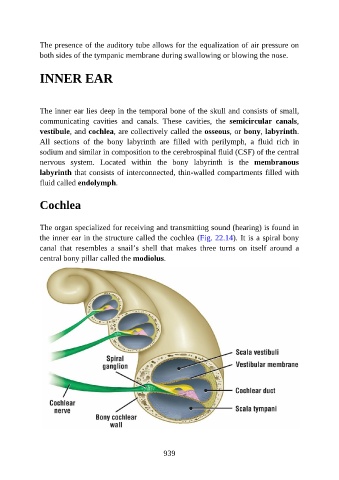Page 940 - Atlas of Histology with Functional Correlations
P. 940
The presence of the auditory tube allows for the equalization of air pressure on
both sides of the tympanic membrane during swallowing or blowing the nose.
INNER EAR
The inner ear lies deep in the temporal bone of the skull and consists of small,
communicating cavities and canals. These cavities, the semicircular canals,
vestibule, and cochlea, are collectively called the osseous, or bony, labyrinth.
All sections of the bony labyrinth are filled with perilymph, a fluid rich in
sodium and similar in composition to the cerebrospinal fluid (CSF) of the central
nervous system. Located within the bony labyrinth is the membranous
labyrinth that consists of interconnected, thin-walled compartments filled with
fluid called endolymph.
Cochlea
The organ specialized for receiving and transmitting sound (hearing) is found in
the inner ear in the structure called the cochlea (Fig. 22.14). It is a spiral bony
canal that resembles a snail’s shell that makes three turns on itself around a
central bony pillar called the modiolus.
939

